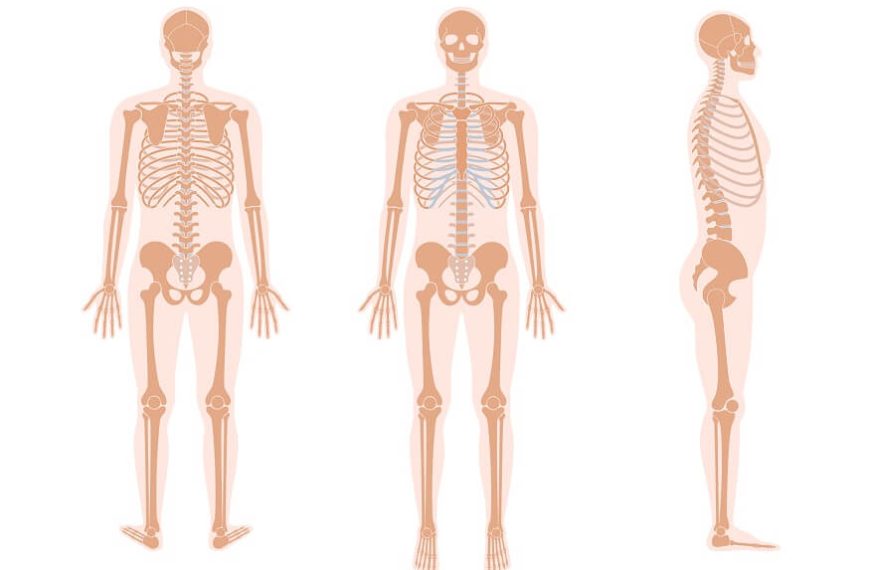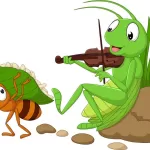A simple definition of the skeletal system for kids is that it is all the bones in the body that give it shape, strength and structure. You can further tell them that if we didn’t have bones, we would be flopping like a jellyfish. The human skeletal system has 206 bones and each bone has a specific function. The function of some bones is to protect the soft and fragile organs of the human body. The skull encases and protects the brain while the ribs protect the heart and lungs. On the other hand, bones in our arms and legs help us to move by supporting the muscles.
The skeletal system also comprises ligaments, tendons and cartilage. Tendons are tough, leathery tissues and what attach our bones to the muscles and ligaments attach bones to each other. The bones have a protective covering where they connect called cartilage which prevents bones from wearing out when they rub against each other. Cartilage also connects the ribs and allows them to move in and out while breathing.
If you are wondering what bones are made of, about 70 percent of the bones are made of hard minerals like calcium and not living tissue as many think. The outside of the bone which is solid and smooth is called the cortical bone. The inside of the cortical bone is porous and spongy and is called the cancellous or trabecular bone. This is what makes the bones lighter and easier for us to move around. It also makes our bones less rigid so that they don’t break easily. All the blood vessels are found here. The centre of the bones has a softer substance called bone marrow.
Bone Marrow is of 2 types — yellow and red. Yellow bone marrow mainly comprises fat cells while red bone marrow is where our body’s red and white blood cells are made. It’s interesting that when we are born all our bones have red marrow but as an adult only about half of our bones have red marrow.
Our bones are connected at certain places called joints like the knees, elbows, shoulder, hips etc. Some of the joints like the shoulder and hip joints have a wide range of movement and are known as ball and socket joints. Joints have a material called cartilage which is smooth and durable and that along with fluid allows the bones to rub against each other without wearing out.
Sometimes our bones may break because of a fall or an accident. Our body can heal broken bones on its own with some help from a doctor. This is to make sure the bone heals properly with the help of a cast or sling. A broken bone heals in stages at first there will be blood around it which forms a scab over the broken parts. Then, collagen which is a tougher tissue will grow over the broken area. Next, the collagen along with cartilage will bridge the gap between the two broken parts which will gradually harden till the bone is healed. This can take months and while healing people use crutches or slings so that there is minimum pressure on the bone.
Functions of the Skeleton and Bones
By far, the most important job of the skeletal system is to support the body. The spine, for example, supports the entire upper body and allows people to stand and walk in an upright position.
The second function is to protect the soft and fragile organs of the body with its rigid structure. The ribs surround and protect the heart and lungs while the skull protects the brain. In the same way, the bones of the spine protect the nerves of the spinal cord by surrounding them.
The skeletal system also makes movement possible. The bones along with the muscles allow the body to move in different ways and most muscles are attached to at least 2 bones. When the brain sends a message to a muscle to move, the muscle pulls on or pushes the bones attached to it.
Fun Facts About Bones for Kids
These facts about bones can be quite interesting and have probably never even crossed your mind before.
- The ear has the smallest bones in the body with the stirrup bone being the smallest. It is behind the eardrum and is just 2.5 to 3.3 millimetres long.
- Our bones stop growing by the time we are around 20 years old but new bone cells are being constantly produced.
- There are 33 bones in our spine.
- 5 billion red blood cells are produced by red bone marrow every single day.
- There are few man made substances that come even close to the lightness and strength of bones.
- If the body has insufficient calcium, it will extract it from the bones which makes them weaker.
- Between each vertebra there are small disks made of cartilage which keep the vertebrae from rubbing against one another. These disks also act as natural shock absorbers.
- We have 12 pairs of ribs but some people are born with a pair more or a pair less. The last two pairs of ribs are called floating ribs because they are not connected to the breast bone or the ribs above them. Of course, they can’t float away as they are attached to the spine at the back.
- The lower jawbone is the only bone in your head that moves. It allows you to open and close your mouth so that you can talk and chew food.
- All babies have some space between the bones of their skull at birth. This allows the bones to move, get closer and even overlap during a natural birth. As the baby grows, the space gradually disappears and special joints called sutures connect the bones.
- Every finger on your hand has 3 bones, except for your thumb, which has 2 bones.
- Joints are both movable and fixed. Fixed joints don’t move at all and are found in the skull while movable joints help you to move around and perform different activities.
How do Bones Grow
It is extremely interesting to note that when a baby is born they actually have 300 bones. As they grow, some of them fuse together to form the 206 bones that we have as an adult. Some of the bones of a baby are made entirely of cartilage while some are made partly of cartilage. Cartilage is soft and flexible and grows with the child and gradually gets replaced by bone, with the help of calcium. This process is completed by the age of 25 years, after which there is no more growth. These bones are extremely strong and very light.
We hope with this brief write-up you have some clarity about skeletal system facts. Human skeleton information is essential to understand our body and how it functions. The human skeleton is quite amazing and is responsible for every movement and activity that we do. It’s what gives our body shape and structure and allows us to stand upright.
For more such exciting blogs, visit our EuroKids website!
















